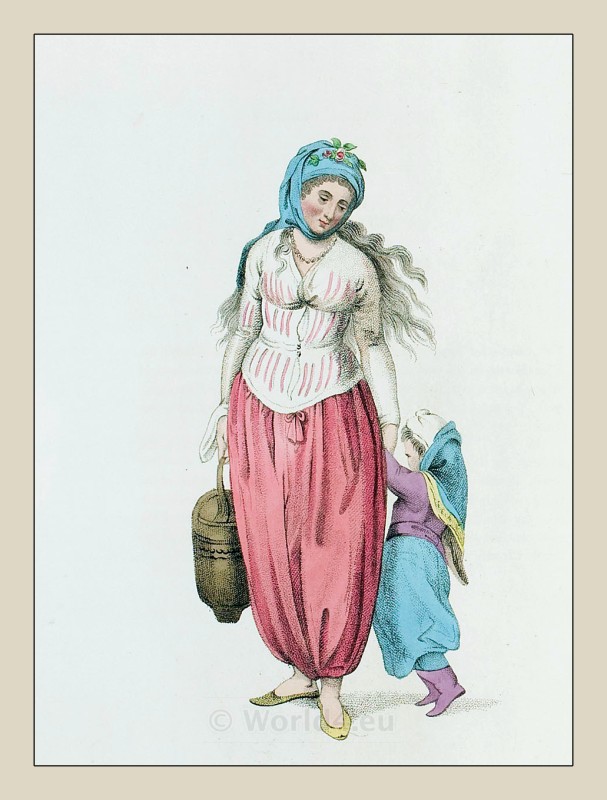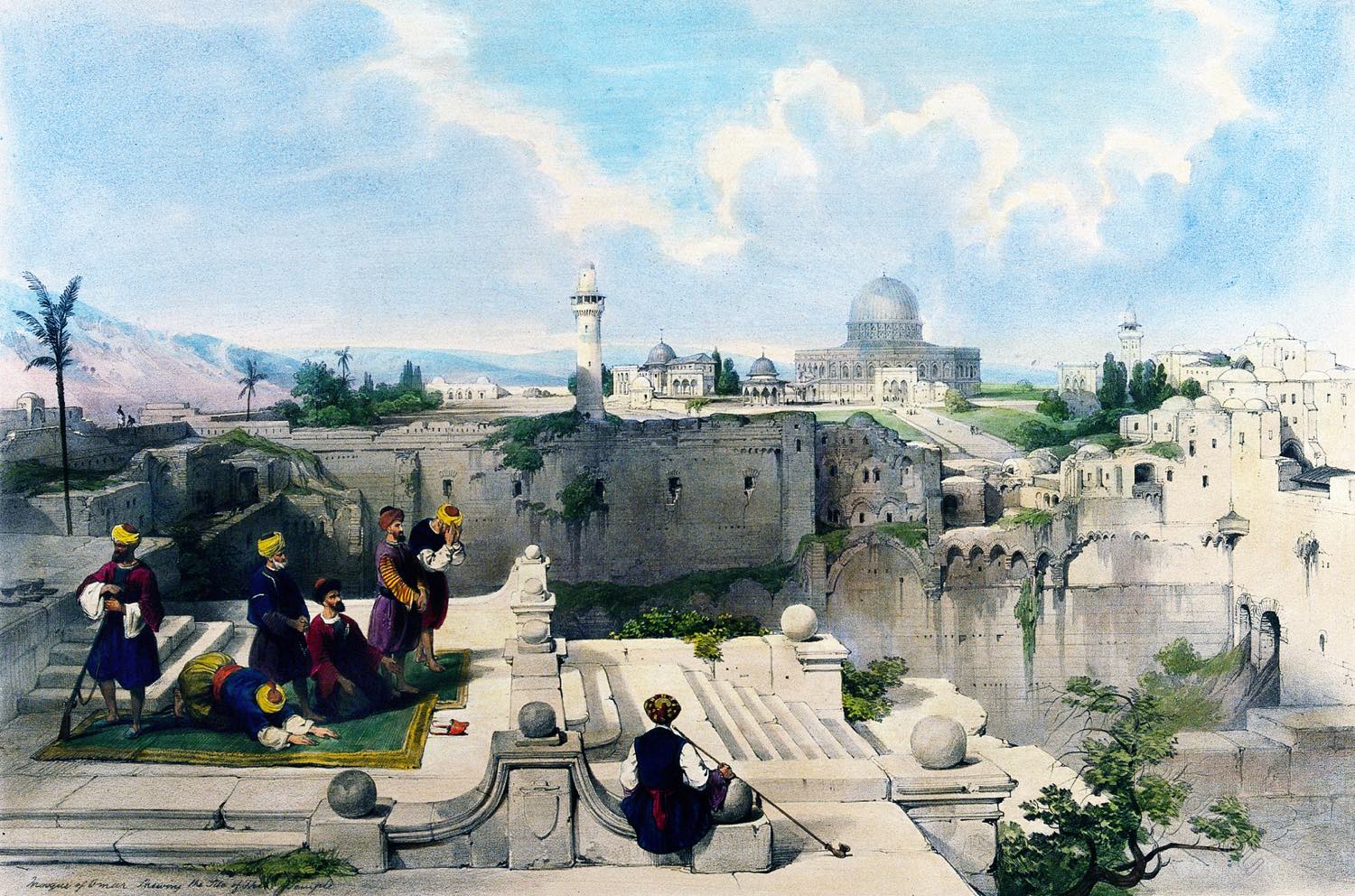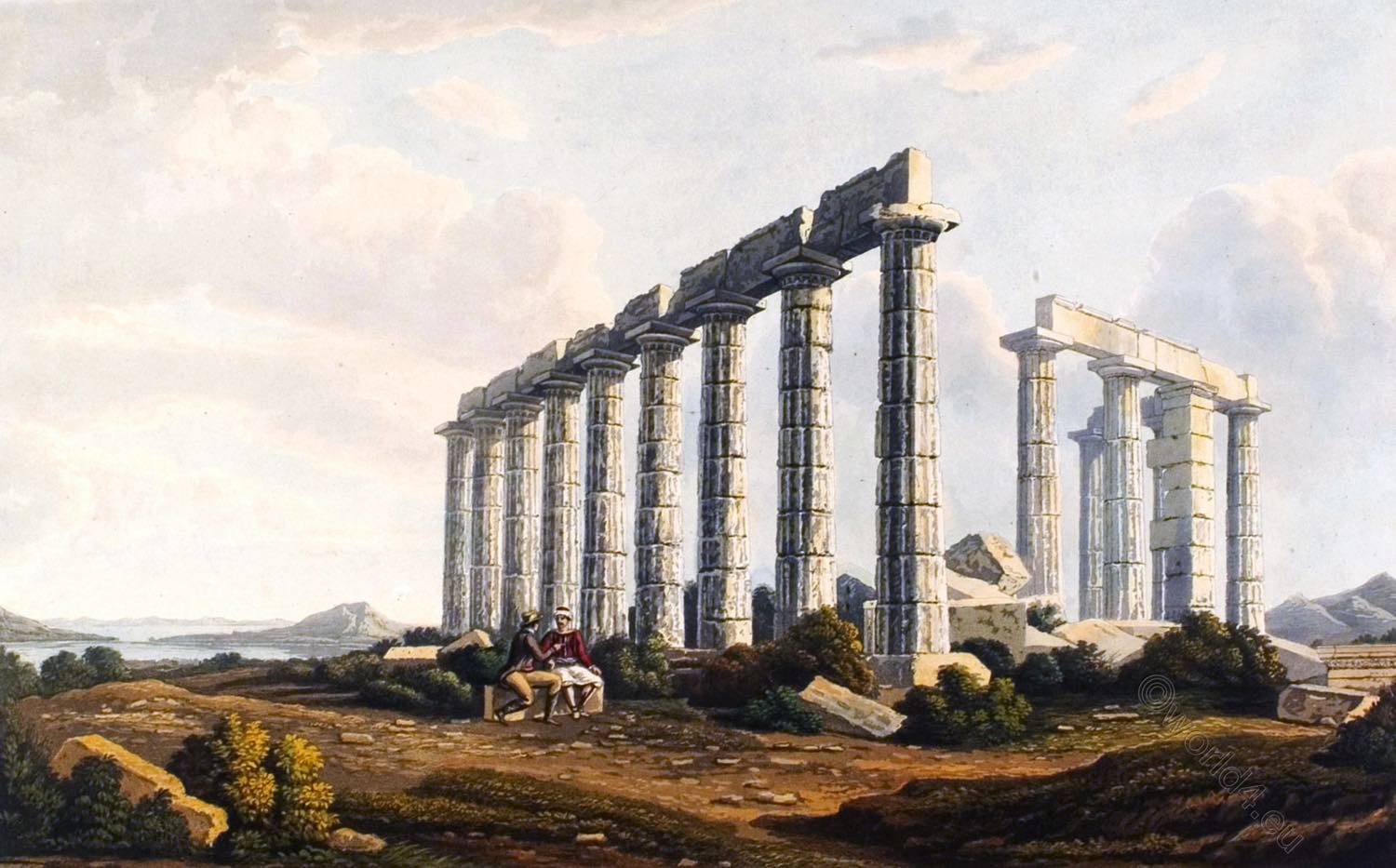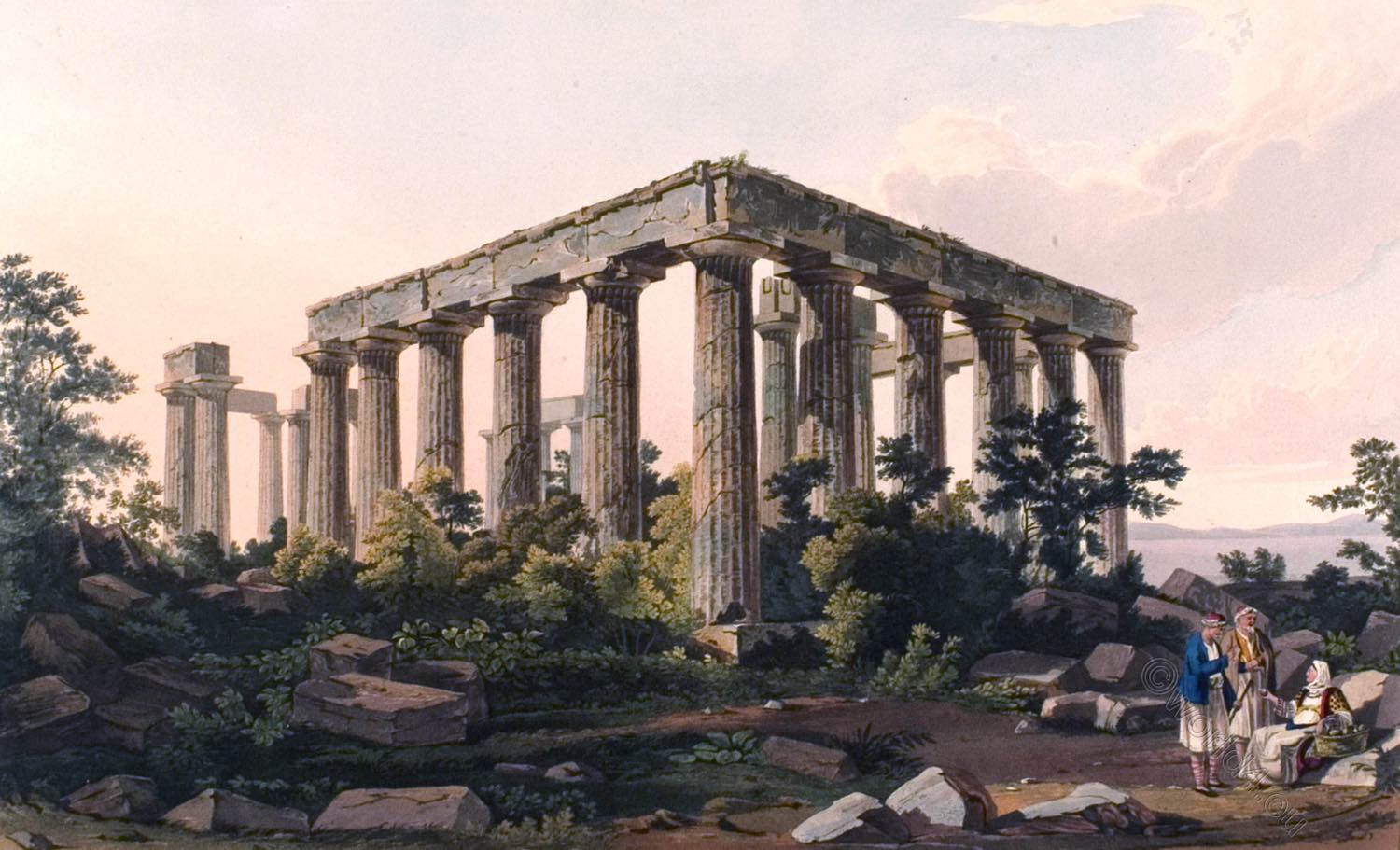
The name of the island is said to go back to the legend of the nymph Aigina, who gave birth to her son Aiakos, begotten by Zeus, on the island, which was then called Oinone or Oinopia. Aegina had been inhabited since the 3rd millennium BC; apparently there were close ties to the Minoan culture on Crete.
It developed into an important trading centre. The island had its heyday around 650 in the archaic era of Greece. At that time, the polis of Aegina was the first city in mainland Greece to mint coins.
The most famous sight on the island of Aegina is the Late Archaic temple of the main goddess Aphaia, which stands on a hill 13 km east of the main town.
TEMPLE OF JUPITER PANHELLENIOS
IN THE ISLAND OF AEGINA.
(Temple of Aphaea, Aegina, Greece.)
“DURING a long drought. With which Greece was afflicted, the mercy of Jupiter was invoked by the supplications of Aeacus, in obedience to a Delphic oracle. Sacrifices were offered to Jupiter Panhellenios, after which the soil was drenched with copious showers.
Mount Panhellenion has nothing worthy of observation except the Temple of Jupiter.” 1)
This venerable edifice appears to have owed its origin to the feeling of gratitude which was excited by the above-mentioned beneficent interposition. It is probably one of the most ancient temples in Greece, and if credit can be given to Pausaniasas 2), it was
founded by Aeacus, son of Jupiter. 3)
In its pristine integrity it displayed thirty-six columns, besides those within the cella. There were six at each end and twelve on each side, including those of the four angles. Twenty-five columns are still standing, with the lower parts of some of those which were within the cella. Great part of the architrave is entire, but the cornice, metopae, and triglyphs have fallen to the ground. The temple is composed of a soft porous stone, anciently coated with a fine stucco, that gave it the semblance of marble.
The extraordinary archaic statues, which had fallen from the tympana of the temple, were discovered in the year 1811, and at present form the most conspicuous ornament of the magnificent collection of antiquities at Munich.
Mount Panhellenion (Áyios Ilías, Profitis Ilias), on which the temple stands, although not of great height, commands a view that can seldom be equalled in beauty and in interest.
This mouldering temple, far sequestered from the precincts of any human habitation, is surrounded by a forest of small trees and odoriferous shrubs, particularly the round pine, the juniper, and the lentiscus. The distant part of the view comprises the Saronic Gulf towards the island of Salainis, with Mount Fames.
The figures portray the country people of Aegina who supplied us with provisions during our stay at the temple.
1) Pausan b. 2. c. 29. and 30. 2) B. 2.c. 13. 3) myth. King of Aegina, son of Jupiter and Europa (or Aegina), father of Peleus and Telamon and thus progenitor of the Aeacids; grandfather of Achilles and Ajax.
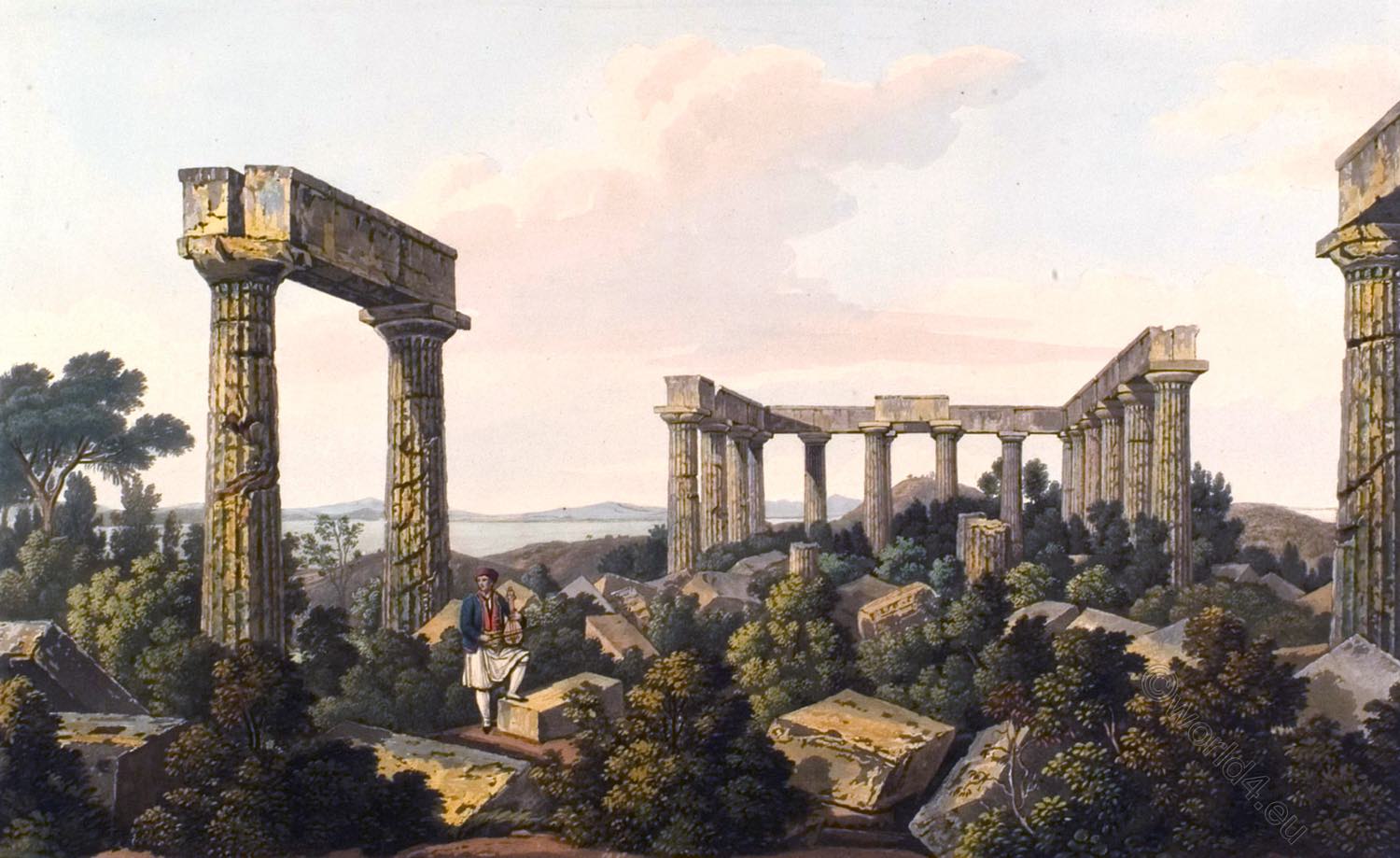
INTERIOR OF THE SAME TEMPLE.
THE plate which is here given represents the interior of the foregoing temple, looking towards the south. The Saronic Gulf (Gulf of Aegina) is expanded before the eye, while Athens is discerned through the interstices of the columns, a little to the right of the shepherd who is playing upon the lyre. The acropolis, the musaeum, and Mount Anchesmos, are seen rising from the plain. More to the left is the island of Salamis, surmounted by Aigaleos and Parnes, stretching out to Pentelikon and Hymettos.
An elevation in AEgina breaks the continuity of the Attic coast for a short interval, after which it is again beheld pursuing its course in a wavy line to the terminating brow of the Sunian promontory, where, in a serene day, the white columns of Minerva Sunias may be seen glittering in the air. The open AEgean is visible beyond the entrance of the Saronic Gulf.
The interior of the temple is filled with masses belonging to the cella, the epistylia, and the roof. The lower part of some of the columns within the cella, and which supported the roof, are still observed in their ancient positions. Most of the shrubs in the foreground are composed of flowering and never-fading evergreens.
Since tins drawing was made, the interior of the temple has been cleared out, and the ancient pavement brought to light. It was covered with a fine stucco of a hard consistence, and about the third of an inch in thickness. A small altar of stone was also found amongst the ruins, and some inscriptions which relate to the implements belonging to the temple, which, together with the invaluable statues, are at present in the collection at Munich that has been previously mentioned.
Source: Views in Greece. Drawings by Edward Dodwell. Rod Well and Martin, London, 1821.

